Foreign News
Iran launches more than 180 missiles at Israel

Israel says Iran launched more than 180 missiles towards the country in a large-scale attack that further heightened fears of an all-out regional war.
Millions of people rushed to shelters before explosions lit up the night skies above Tel Aviv and Jerusalem. Paramedics said two were lightly injured by shrapnel.
The Israeli military said most of the missiles were intercepted with US help, but that there were a “small number of hits”. It accused Iran of a “dangerous escalation” and warned of “consequences”.
Iran’s Revolutionary Guards said the missiles hit their targets and that it had retaliated for the killings of the leaders of its allies Hezbollah and Hamas, as well as a top Iranian general.
The US said the missile attack appeared to have been “defeated and ineffective”, and that it was consulting with Israel on a response.
The UN’s secretary general condemned what he called the “broadening conflict in the Middle East”, adding: “This must stop. We absolutely need a ceasefire.”
The missile attack came hours after Israeli troops began an invasion of southern Lebanon to remove what the military said were “Hezbollah terror targets” in border villages that posed a threat to residents of northern Israel.
Israel has gone on the offensive against the Iran-backed Shia Islamist political and military organisation after almost a year of cross-border hostilities sparked by the war with Hamas in Gaza, saying it wants to ensure the safe return of residents of border areas displaced by Hezbollah rocket, drone and missile attacks.
Air raid sirens sounded all across Israel at around 19:30 local time (16:30 GMT) on Tuesday, as the Israel Defense Forces (IDF) warned missiles had been launched from Iran.
Within a few minutes in Jerusalem, loud explosions were heard in Jerusalem as missiles flew overhead and were intercepted by Israeli air defence systems.
Videos shared on social media showed streams of light as the missiles flew over Israel, and clouds of smoke as they were intercepted or detonated on impact.
Just over an hour later, the IDF announced that people were allowed to leave their protected spaces because it did “not identify any additional aerial threats from Iran”.
Later, IDF spokesman Rear Admiral Daniel Hagari said in a statement that “there were a small number of hits in the centre of Israel, and other hits in Southern Israel”.
“The majority of the incoming missiles were intercepted by Israel and a defensive coalition led by the United States.”
He added: “Iran’s attack is a severe and dangerous escalation. There will be consequences.
“Our defensive and offensive capabilities are at the highest levels of readiness. Our operational plans are ready. “We will respond wherever, whenever, and however we choose, in accordance with the directive of the government of Israel.”
US National Security Adviser Jake Sullivan told reporters at the White House that he did “not know of any damage to aircraft or strategic military assets in Israel”.
“In short, based on what we know at this point, this attack appears to have been defeated and ineffective,” he added.
He also condemned the attack as “a significant escalation” and warned: “We have made clear that there will be consequences, severe consequences, for this attack, and we will work with Israel to make that the case.”
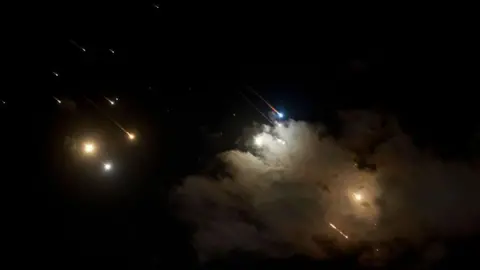
Iran’s Islamic Revolution Guard Corps (IRGC) put out a statement saying it had launched scores of ballistic missiles at “the heart of the occupied territories” and targeted unspecified “sensitive security and military” centres.
The attack was retaliation for “the violation of Iran’s sovereignty and the martyrdom” of Hamas political leader Ismail Haniyeh, who was killed by an explosion in Tehran in July that Iranian officials blamed on Israel, but Israeli officials did not claim. The statement described the missile barrage as having been “in line with the legitimate right of the nation to defend itself”.
It also said the attack was in response to the Israeli air strike in the southern suburbs of Beirut on Friday that killed Hezbollah leader Hassan Nasrallah and Brig-Gen Abbas Nilforoushan, the operations commander of the IRGC’s overseas arm, the Quds Force.
The IRGC warned Israel that it would “be faced with subsequent crushing blows” if it responded to the attack.
Later, Iranian state media claimed that missiles had hit the Nevatim, Hazterim and Tel Nof air bases, as well as Israeli tanks in Netzarim – a reference to an Israeli military corridor in central Gaza – and gas installations in the southern Israeli city of Ashkelon.
The attack took place about an hour after a senior White House official told reporters that the US had indications that Iran was preparing to imminently launch missiles at Iran.
Prime Minister Benjamin Netanyahu then told Israelis in a video statement: “We are in the midst of a campaign against Iran’s axis of evil.
“Together, we will stand steadfast in the trying days ahead of us. Together we will stand. Together we will fight and together we will win.”
Meanwhile, the US military’s Central Command announced that three additional squadrons of F-16 and F-15E fighter aircraft and A-10 attack aircraft were arriving in the Middle East, and that one squadron had already arrived.
Over the weekend, the Pentagon had also ordered the USS Abraham Lincoln carrier strike group to remain in the region to “deter aggression”.
In April, Iran launched more than 300 drones and missiles at Israel in retaliation for a deadly strike on the Iranian consulate in Syria that killed several top commanders.
Almost all of them were shot down by Israel, the US and other Western allies and their Arab partners, and an air base in southern Israel sustained only minor damage when it was hit.
Israel responded by launching a missile that hit an Iranian air base.
On Saturday, Iran’s Supreme Leader Ayatollah Ali Khamenei had promised that the death of his close ally Hassan Nasrallah would “not go unavenged”. He gave no details, but said: “The fate of this region will be determined by the forces of resistance, with Hezbollah at the forefront.”
Iran has built a network of allied armed groups across the Middle East, which are all opposed to the US and Israel and sometimes refer to themselves as the “Axis of Resistance”. Besides Hezbollah, they include Hamas in the Palestinian territories, the Houthis in Yemen, and a number of Shia militias in Iraq and Syria.
[BBC]
Foreign News
Fourth tourist dies of suspected methanol poisoning in Laos
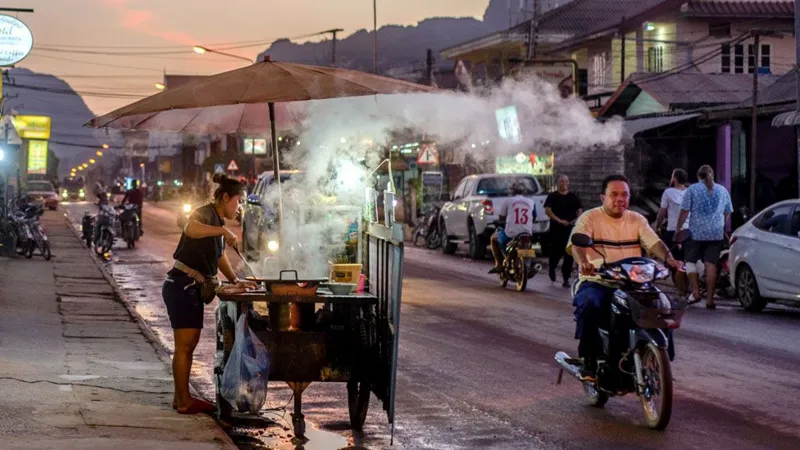
Australian teen Bianca Jones has become the fourth tourist to have died in a suspected mass poisoning in Laos.
The 19-year-old’s family confirmed her death to the media on Thursday. Hours earlier, the US State Department told the media that an American man died in the tourist town of Vang Vieng.
Two Danish women, aged 19 and 20, also died last week in Laos, Danish authorities confirmed, declining to share more due to confidentiality concerns.
The deaths remain under police investigation, but news reports and testimonies online from other tourists suggest they may have consumed drinks laced with methanol, a deadly substance often found in bootleg alcohol.
Jones’s friend Holly Bowles is in hospital on life support, while a British woman is also reportedly in hospital.
New Zealand’s foreign ministry told local media on Thursday that one of its citizens was also unwell from suspected methanol poisoning. It is unclear how many more people have fallen ill.
Australian Prime Minister Anthony Albanese said the department of foreign affairs had confirmed Jones’s death.
“Our first thoughts in this moment are with her family and friends who are grieving a terrible and cruel loss,” Albanese said on Thursday afternoon.
“This is every parent’s very worst fear and a nightmare that no one should have to endure.”
He said he hoped Ms Bowles, who is currently at Bangkok Hospital, would recover well.
The US State Department said it was “closely monitoring” the situation with regards to the American victim, adding that it was up to local authorities to determine the cause of death.
Australian, New Zealand and UK authorities have each warned their citizens to be careful of methanol poisoning when consuming alcohol in Laos.
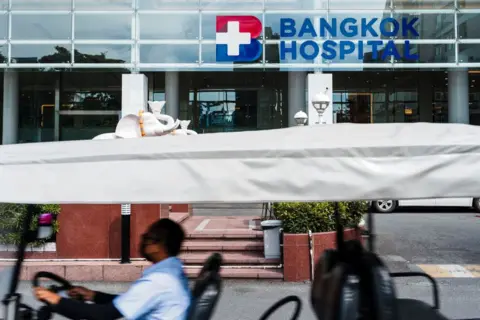
Nana Backpacker Hostel, where the two Australian women stayed in Vang Vieng, told the BBC that it was closed for police investigation.
The hostel’s manager told the Associated Press that the two women were among more than 100 guests who received free shots of Lao vodka from the hostel. The pair then headed out for the night, he said, adding that no other guests reported health issues.
The manager said he hoped the investigation would clear the hostel’s name, but said they have stopped giving free shots for now.
In a statement to Australian newspaper the Herald Sun, Jones’s family expressed their “deepest gratitude for the overwhelming support, love, and prayers we’ve received from across Australia”.
“We kindly ask for privacy as we navigate through our grief and begin to heal,” the statement said.
Unlike ethanol, the key component of alcoholic beverages, methanol is toxic to humans. Bootleg liquor producers sometimes add it to their drinks, however, as a cheap way to increase alcohol content.
Earlier this year, at least 57 people in India died after consuming methanol-laced liquor. Similar cases of mass poisoning have also been reported across the world, from the Philippines to Peru.
Vang Vieng is a small riverside town in central Laos, and a hub for backpackers in Southeast Asia.
[BBC]
Foreign News
MSF halts work in Haitian capital over attacks
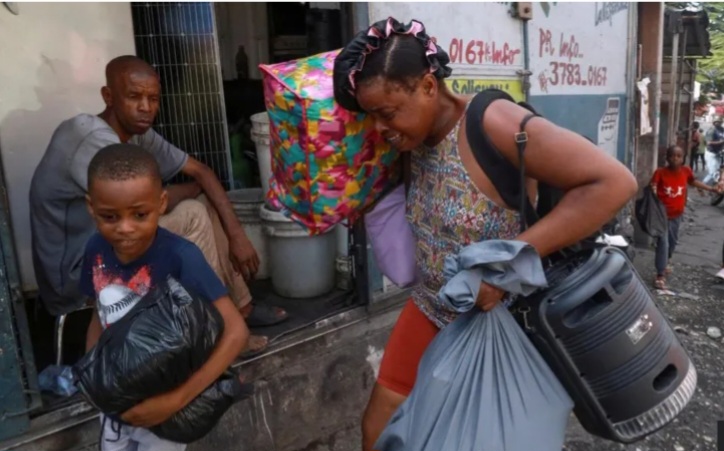
The humanitarian medical organisation Médecins Sans Frontières (MSF) has suspended its operations in the Haitian capital, Port-au-Prince, following a violent attack on its staff and the alleged killing of two patients they were treating by Haitian police officers.
The incident took place last week as violence continued to worsen in the country.
An estimated 25 people were killed in Port-au-Prince on Tuesday alone in what police say was a foiled attempt at a gang invasion of a wealthy neighbourhood.
Politically, the situation also remains critical with interim Prime Minister Garry Conille fired this month by the country’s ruling council – less than six months after he took office.
MSF says that on 11 November one of its ambulances carrying three young men with gunshot wounds was stopped by Haitian law enforcement officers.
Apparently supported by a paramilitary self-defence group, the men attacked the vehicle, removed two of the patients, took them outside hospital grounds and executed them.
The humanitarian group denounced the violence in a strongly worded statement last week, saying their personnel had been tear-gassed and held against their will for several hours.
While that incident appears to have been the final straw for MSF in Port-au-Prince, at least for the time being, it was not the only recent example of extreme aggression against their staff.
The announcement comes amid a worsening climate of violence in Haiti with some 25 suspected gang members killed in the capital on Tuesday.
The police say that residents helped officers to fight off an attempted attack on the upscale suburb of Pétion-Ville.
The neighbourhood was cordoned off after residents barricaded streets, some armed with machetes and makeshift weapons, in an apparent effort to prevent a gang invasion.
[BBC]
Foreign News
Living in Delhi smog is like watching a dystopian film again and again
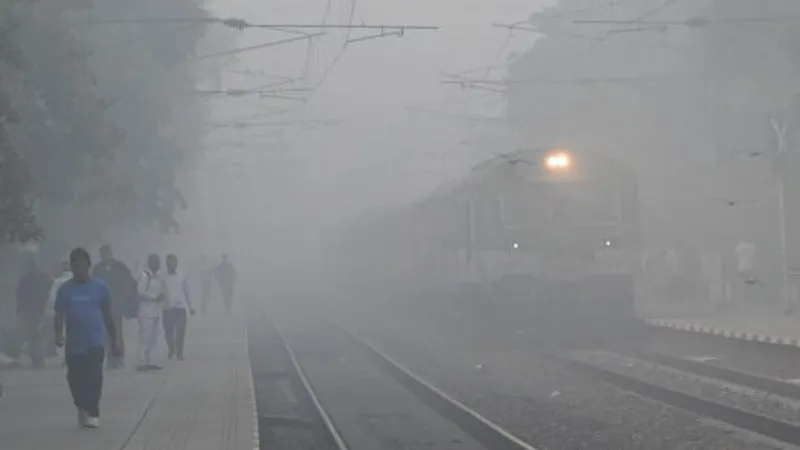
Winter has come to Delhi and with it, a familiar sense of gloom. The sky here is grey and there is a thick, visible blanket of smog.
If you stay outdoors for more than a few minutes, you can almost taste ash. You will feel breathless within minutes if you try to run or even walk at a brisk pace in the smog.
Newspapers are back to using words like toxic, deadly and poisonous in their main headlines.
Most schools have been shut and people have been advised to stay indoors – though those whose livelihoods depend on working outdoors can’t afford to do so.
Delhi’s air quality score was somewhere between 1,200 and 1,500 on Monday and Tuesday, according to different monitoring agencies. The acceptable limit is less than 100.
These scores measure the levels of particulate matter – called PM 2.5 and PM10 – in the air. These tiny particles can enter the lungs and cause a host of diseases.
On social media, people have been expressing shock, disappointment and anguish that it’s all happening again.
Along with the gloom, there is a strong sense of déjà vu – like we have seen this all many times before in the past 15 years.
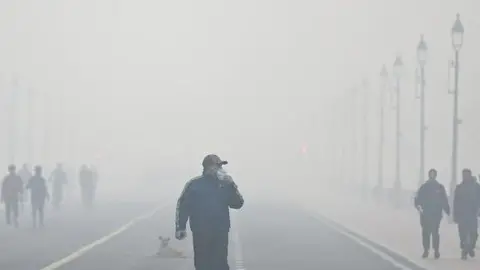
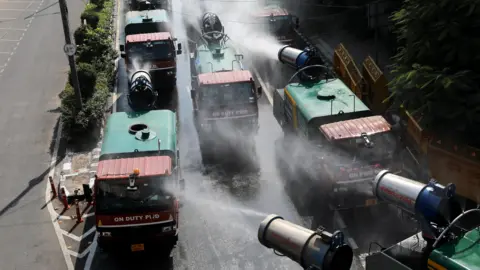
Covering this story feels like watching (and being in) the same dystopian film every year – following the same characters, plot and script. The outcome is always the same – nothing changes.
The parks are empty again – people, particularly children and the elderly, have been told to stay indoors.
Those who must work – daily-wage labourers, rickshaw pullers, delivery riders – are coughing but still going out.
Hospitals are seeing an increasing number of people coming in with respiratory problems.
And amid all this, we are back to the same question again – why does nothing change?
The simple answer is that solving Delhi’s air problem requires monumental efforts and coordination.
The sources of the problem are many. One of them is the practice of farmers burning crop remains to clear their fields quickly to sow seeds for the next yield.
This mostly happens in the neighbouring states of Punjab, Haryana and Uttar Pradesh. The smoke from the farm fires engulfs Delhi every winter and hangs low in the atmosphere as wind speeds reduce during winter months.
But farmers can’t be entirely blamed for this because this is the cheapest way of clearing fields.
Different governments have talked about providing machines and financial incentives to stop crop burning, but very little has happened on the ground.

Delhi itself produces a huge chunk of the pollution – emission from vehicles, construction and factories.
Every year, in the winter months, people get angry, journalists write and produce reports, politicians blame each other and courts fume – until we do it all over again the next year.
A public health emergency like this would spark mass protests in most democracies. But the anger in Delhi is mostly limited to social media.
Activists say the reason is that pollution doesn’t cause immediate problems for most people. Ingesting high levels of PM2.5 deteriorates health slowly. A Lancet study found that pollution led to more than 2.3 million premature deaths in India in 2019.
And then there is the class divide. People who can afford to temporarily leave the city do that, those who can buy air purifiers do that, and those who can vent on social media do that.
The rest, who don’t have these options, just go about their lives.
The collective angst has so far not resulted in a massive protest and, as the Supreme Court once observed, politicians just “pass the buck” and wait for the season to get over.
Experts say governments at the federal level and in different states need to leave their party politics behind and work together to solve this problem. They need to focus on long-term solutions.
And citizens need to hold politicians accountable and courts have to pass decisive orders months before the pollution worsens.
This year, we are again in the thick of the season and temporary measures have been announced, like banning construction work.
But can these bring Delhi’s elusive blue skies back? The evidence from the past few years doesn’t give much hope.
[BBC]
-

 Life style5 days ago
Life style5 days agoKing of coconuts heads for a golden future
-

 Latest News7 days ago
Latest News7 days agoColombo district preferential votes announced
-
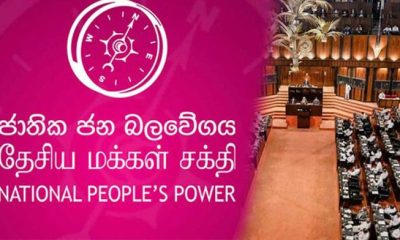
 News4 days ago
News4 days agoNPP appoints two defeated candidates as NL MPs
-
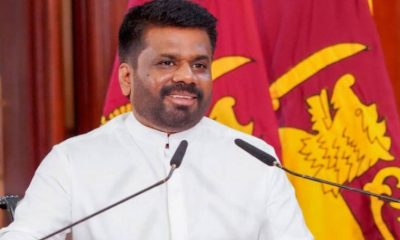
 News6 days ago
News6 days agoPresident warns his party: “We will fail if we view power as an entitlement to do as we please”
-
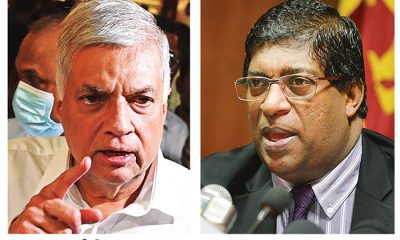
 News3 days ago
News3 days ago‘Gas Cylinder’ explodes; Ranil flays NDF Secy. for submitting Ravi’s name
-
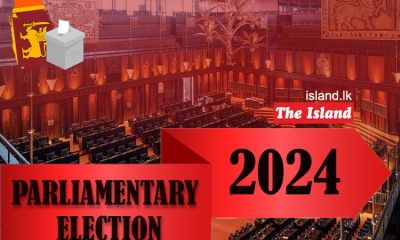
 Latest News7 days ago
Latest News7 days agoGampaha district: NPP 16, SJB 3
-
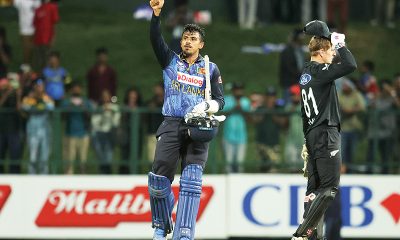
 Sports3 days ago
Sports3 days agoMaking batting compulsory for bowlers has worked – Theekshana
-

 Editorial6 days ago
Editorial6 days ago‘Maroon Wave’ and AKD Magic











